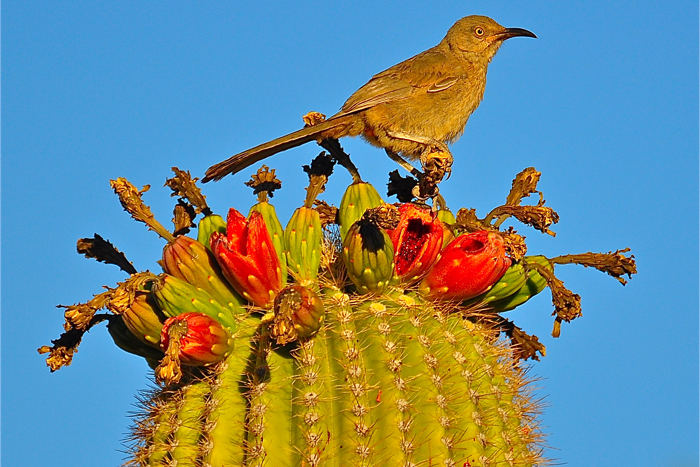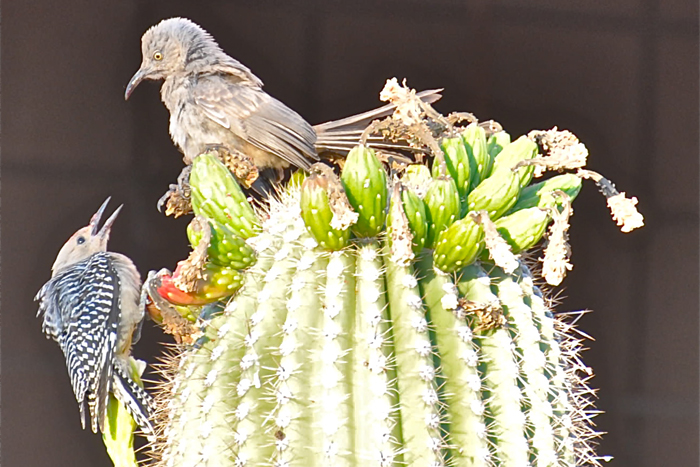Of a Feather: Photos Reveal Stunning Birds of the Southwest
Dinner

A White-winged Dove, Zenaida asiatica, is dining while upside-down and head-in to get a meal of saguaro seeds. The White-winged Dove was originally only found caring on its life cycle in the thick and thorny branches of the desert trees. It has adapted well and now is common throughout desert communities, living close to its human neighbors. It is one of three varieties of doves that make their homes in the Sonoran Desert. The other two desert dwelling dove species are the Mourning Dove, Zenaida macroura, and the Inca Dove, Columbina inca.
Keeping watch

The Curve-billed Thrasher, Toxostoma curvirostre, rests on the ripened fruits of a saguaro cactus. This thrasher is the most widespread of all the western thrashers and has also adapted to living in the towns and cities found throughout the desert Southwest. They are large, long-tailed songbirds whose range extends deep into central Mexico. Their nests are often built in one of the varieties of the very, thorny cholla cactus.
Not seeing eye to eye

Sometimes the birds of the Sonoran Desert can have their own disagreements. The Curve-billed Thrasher and a Gila Woodpecker shown here seem to be having an early morning argument over just who is going to dine on the delicious saguaro fruit.
Song and beauty

The birds of the American Southwest are as varied as the region's environments. They bring song and beauty to the natural landscape and enrich the lives of all humans who will take the time to pause and enjoy their presence. This Gila Woodpecker makes a spectacular sight as it flies from the flowering crown of a saguaro cactus.
Get the world’s most fascinating discoveries delivered straight to your inbox.


